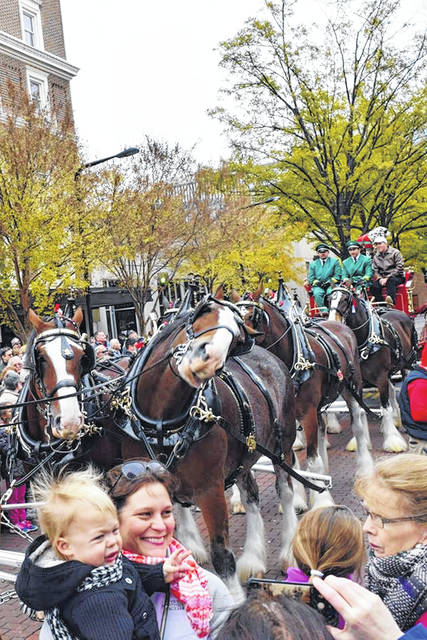PICKENS COUNTY — The Budweiser Clydesdales may have began as a publicity stunt when they delivered a case of beer to President Franklin D. Roosevelt following the repeal of prohibition, but the horses we all know and love today have reached iconic status in the years since — and if you’ve seen them before, you’re in luck.
According to Budweiser’s “Hitch schedule,” the famous steeds (as well as their trusty Dalmatian sidekick) will be making several appearances in the Upstate in the coming weeks — including Pickens County.
On Aug. 28, the full hitch will appear at 7 p.m. in downtown Clemson — the night before the National Champions take on Georgia Tech in Saturday’s 2019-20 season opener.
Single horse appearances will follow in Greenwood, Greenville and Anderson.
But long before Clydesdales were associated with Budweiser or made famous for appearances in parades and Superbowl commercials — they were work horses — originally bred to do the “heavy lifting” in rural Scotland.
Clydesdale, Scotland, to be specific.
According to the Commonwealth Clydesdale Horse Society — yes, that’s a thing — the breed was developed from Flemish stallions imported to Scotland and crossed with local mares.
The first recorded use of the name “Clydesdale” for the breed was in 1826, and by 1830, a system of hiring stallions had begun that resulted in the spread of the horses throughout Scotland and into northern England. the CCHS says.
The first breed registry was formed in 1877. In the late 19th and early 20th centuries, thousands of Clydesdales were exported from Scotland and sent throughout the world, including to Australia and New Zealand, where they became known as “the breed that built Australia.”
However, during World War I, population numbers began to decline due to increasing mechanization and war conscription. This decline continued, and by the 1970s, the Rare Breeds Survival Trust considered the breed vulnerable to extinction.
Even today, although population numbers have increased, they are still thought to be vulnerable.
Enter Anheuser Busch … Junior. (The grandson and great-grandson of then liquor-company Anheuser-Busch’s founders.)
Like other brewers, Anheuser-Busch (the company) had survived the “dry” years of Prohibition — 1919 to 1933 — by branching out and making everything from ice cream to car bodies.
Once prohibition was repealed, Junior and his brother celebrated by buying a team of Clydesdales and gifting them to their father.
The rest, as they say, is history.
Still, not every Clydesdale has what it takes to “make the hitch.”
According to Warm Springs Ranch — one of the homes to the famous horses — in order to join the elite Budweiser hitch, a Clydesdale must meet certain requirements: They must stand at least 18 hands high (or 6 feet tall) at the withers (shoulders) and they must be geldings at least 4-years-old.
Additionally, they must have a bay coat, four white stockings, a blaze of white on the face, a black mane and a black tail. Oh, and they must weigh between 1,800 and 2,300 pounds.
The ranch also stated each hitch horse consumes as much as 20-25 quarts of whole grains, minerals and vitamins, 50-60 pounds of hay and 30 gallons of water — per day.
Whoa.






